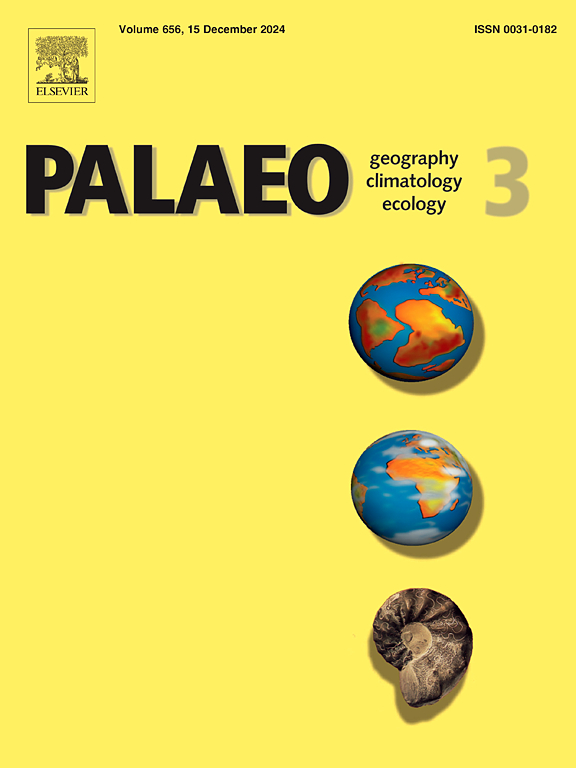根据花粉记录,哈萨克斯坦东部过去2200年的降水变化
IF 2.7
2区 地球科学
Q2 GEOGRAPHY, PHYSICAL
Palaeogeography, Palaeoclimatology, Palaeoecology
Pub Date : 2025-06-02
DOI:10.1016/j.palaeo.2025.113072
引用次数: 0
摘要
中亚干旱区全新世气候档案显示了显著的空间差异。本文分析了哈萨克斯坦东部Kolbay盆地晚全新世的花粉组合,表明该地区在过去2200年中经历了从草原到沙漠的转变。利用加权平均偏最小二乘回归(WA-PLS)模式对年平均降水(Pann)进行定量重建,发现气候经历了两个相对湿润的阶段(270 BCE-450 CE和750-1750 CE)和两个相对干燥的阶段(450-750 CE和1750 CE至今)。我们认为,大尺度中纬度西风环流和北大西洋涛动(NAO)对Kolbay盆地的重建Pann值有重要影响,同时也受复杂的区域高寒地貌(天山、帕米尔高原)和不同地理区域水汽输送路径的影响。本文章由计算机程序翻译,如有差异,请以英文原文为准。
Precipitation changes in eastern Kazakhstan over the last 2200 years based on pollen records
Holocene climate archives from Arid Central Asia reveal significant spatial differences. In this paper, we analyse late Holocene pollen assemblages from the Kolbay Basin in eastern Kazakhstan, which show a transition in regional vegetation from steppe to desert over the last 2200 years. Quantitative reconstruction of mean annual precipitation (Pann) using the weighted averaging partial least squares regression (WA-PLS) model has revealed that climate has experienced two relatively wet phases (270 BCE-450 CE and 750–1750 CE) and two relatively dry phases (450–750 CE and 1750 CE to present). We infer that the reconstructed Pann value in the Kolbay Basin was chiefly influenced by large-scale mid-latitude westerly circulation and the North Atlantic Oscillation (NAO), as well as by the complex regional alpine geomorphology (Tianshan Mountains, Pamir Plateau) and different paths of water vapor transportation across different geographical regions.
求助全文
通过发布文献求助,成功后即可免费获取论文全文。
去求助
来源期刊
CiteScore
5.90
自引率
10.00%
发文量
398
审稿时长
3.8 months
期刊介绍:
Palaeogeography, Palaeoclimatology, Palaeoecology is an international medium for the publication of high quality and multidisciplinary, original studies and comprehensive reviews in the field of palaeo-environmental geology. The journal aims at bringing together data with global implications from research in the many different disciplines involved in palaeo-environmental investigations.
By cutting across the boundaries of established sciences, it provides an interdisciplinary forum where issues of general interest can be discussed.

 求助内容:
求助内容: 应助结果提醒方式:
应助结果提醒方式:


